





M14 WOOD
460.00€
Out of stock
Length 1127mm
Weight 3850g
Barrel Length 500mm
Magazine Capacity 70
Ammo Size 6mm BB
Muzzle Velocity 95m/s 310fps
Rounds Per Minute 750-800
Tokyo Marui M14 Automatic Electric Airsoft Gun provides cutting edge electric airsoft gun technology in classic battle rifle shape. The M14 battle rifle was the trusted rifle of US Army and Marine Corps infantry men on the battlefields of Vietnam War. It still continues to provide heavy-weight firepower to US fighting men in modern day conflict zones.
Tokyo Marui M14 features new version VII gearbox, accurate Tokyo Marui hop up system and large amounts of metal parts. Metal parts include butt plate, magazine, receiver, sights, trigger assembly and outer barrel. The plastic wood stock is repleacable with wooden custom furniture.
Real Steel
Caliber: 7.62×51 mm NATO (.308 Winchester)
Action: Gas operated, rotating bolt
Length: 1120 mm
Barrel Length: 559 mm
Weight loaded: 5,1 kg (6.6 kg M14A1)
Magazine: 20 rounds, detachable box
Rate of fire: 700 -750 rounds per minute
The experience gained by US troops during the Second World war showed that the M1 Garand rifle has a lot of things to be improved. The first was the feeding system with 8-rounds en-bloc clips that does not allowed the refilling of the partially full magazine. Others were excessive length and weight of the rifle. The cartridge used in M1 Garand and known as .30-06 (7.62x63mm) was too long and too heavy, effectively limiting the load of ammunition carried by each soldier. First attempts to improve M1 were made during the war, and numerous experimental modifications in .30-06 were built, mostly using the 20-rounds detachable magazines from Browning BAR M1918 automatic rifle. One of such prototypes was the T20 (“T” means “test”) of 1944. T20 was basically the M1 Garand rifle fitted with 20 rounds BAR magazine and with selective fire capability. This prototype latter evolved into the T37 rifle, which had gas cylinder moved back a little and was chambered for newest American prototype cartridge – T65. The T65 was no more than .30-06 case, shortened by 1/2 inch (12 mm), but retaining the original ballistic properties due to modern propellants used. It was slightly lighter and cheaper to made than .30-06, and has long effective range and good potential for accuracy, both desired by US Army. The idea of truly intermediate round was not acceptable to the US Military at that period. In the early 1950s T37 evolved into the T44 experimental rifle, which featured redesigned, self-regulated gas system with short stroke gas piston. Further development and tests lead to the slightly modified T44E4 and T44E5 (heavy barreled squad automatic weapon) prototypes, which were finally adopted by US Army as M14 and M15 rifles in the 1957. The M15, a heavy barreled weapon, however, was never brought into production. It must be noted that T44E4 was extensively tested against the only other entree in the US trials, the T48 rifle (Belgian FN FAL rifle made under license in USA by H&R Inc.). Both rifles passed the trials with equally high results, but US finally settled on the T44 because it was slightly lighter, similar to M1 Garand in manufacturing and operation, and, above all, a “Native American” design.
The contracts to produce M1 rifles were issued to some US companies, such as Thompson-Ramo-Wooldridge (TRW Inc), Harrington and Richardson Arms Co (H&R), Winchester-Western Arms Division of Olin Mathieson (Winchester) and Springfield Armory Inc (Springfield). Production was ceased by US Government in 1964, with some 1 380 000 weapons made. The termination of the production was the result of combat experience in the SE Asia, particularly in Vietnam. The M14 was too long and too heavy to be carried all day long in hot and wet climate. The 7.62mm NATO ammunition was too heavy, limiting the amount of ammunition carried by soldiers on patrols. The selective fire capability was mostly useless, since the M14 was way too light for powerful cartridge it fired, and climbed excessively when fired in bursts. In fact, most of the M14s were issued to troops with fire selectors locked to semi-automatic mode, to avoid useless waste of ammunition in automatic fire. The squad automatic version, known as M14E2, also was not too successful in its intended role. As soon as those deficiencies of the M14 became obvious for US Army Command, they started the search for lighter rifle, and finally settled on the Colt/Armalite AR-15 5.56mm assault rifle, adopting it as the M16A1. M14 was replaced as a first line weapon in the late 1960s, but is still used in small numbers by US Navy. It also served as a platform to build M21 Sniper rifles. Semi-automatic only versions of the M14 rifle are commercially manufactured for civilian and police markets by the Springfield Armory Inc since 1974 under the name of M1A. Some other US companies are assembling the M14-type semi-automatic rifles using military surplus M14 parts kits. Beginning in the early 1970s thousands of M14 rifles were given to several nations under military aid programs. In the 1990s alone, over 100,000 of these rifles have been given away to Estonia, Latvia, Lithuania, the Philippines, South Korea, Taiwan, and Turkey. In USA, for some time M14 was mostly relegated to Honor Guard and similar duties, but during recent campaigns in Iraq and Afghanistan many old M14 rifles were withdrawn from warehouses, dusted off and issued to troops in the field to improve range and lethality of troops armed with 5.56mm weapons. Some M14 rifles are issued as is, some are fitted with new telscope sights to serve as a para-sniper / designated marksman rifles (concept similar to Russian SVD rifle). US Marine Corps also re-issued M14 rifles for use in Designated Marksman role (DMR), and those rifles are fitted with newly made polymer stocks with adjustable buttstocks and pistol grips, and other accessories such as detachable bipods or sound moderators (silencers). Recently US Special Forces, operating under the US Navy flag, stepped forward with the Mk.14 Mod.0 Enchanced Battle rifle, which is an M14 fitted with many new commercially available parts, new stock with adjustable butt and plenty of Picatinny rails, and new accessories such as noise suppressors and optical equipment. The Mk.14 Mod.0 EBR is currently being used by US Navy SEAL's and possibly some other special operation forces within US Military.
In general, the M14 was a comtroversial weapon. It had the accuracy and range of the “old time” military rifles, but was too long, heavy and lacked the automatic fire firepower of a true assault rifle, often required in the modern close combat. Nevertheless, it was a reliable and powerful weapon, often favored by users for high lethality, long range and good penetration – features much appreciated by US soldiers during recent operations in Afghanistan and Iraq.
The M14 is a gas operated, magazine fed, selective fire (originally) design. The gas system is located under the barrel, and has a short stroke (about 1 1/2 inch – 37 mm) gas piston which operates the M1 Garand style action rod. The gas system features an automatic gas cutoff feature, which limits the amount of gases used to operate the weapon. The rotating bolt is quite similar to one found in M1 Garand but it has a roller instead of the simple lug, which connects the bolt to the operating rod. The fire mode selector is located at the right side of the receiver, above the trigger, and could be removed if rifle should not be fired in bursts, or re-installed if required. The rear receiver bridge features the stripper clips guides, so the detachable magazine could be refilled in place by using standard stripper clips. The bolt stop device is incorporated into the left wall of the receiver and holds the bolt open when last round from the magazine is fired. The safety switch is similar to M1 Garand and is located at the front of the triggerguard. Standard sights consist of the blade front sight with two protective “ears” and diopter-type adjustable rear sight, mounted on the rear of the receiver. Barrel is equipped with long flash suppressor. To be used in selective fire mode, M14 can be equipped with light detachable bipod. The M14A1 Squad Automatic rifle differs from M14 in the following: the fire selector is always installed. The standard wooden single-piece stock with semi-pistol grip is replaced by the “straight line” wooden stock with separate pistol grip and with folding front grip under the forearm. The hinged shoulder rest is attached to the buttplate. Special removable muzzle jump compensator is fitted to the barrel, as well as lightweight bipod.
| Weight | 5 kg |
|---|
You must be logged in to post a review.



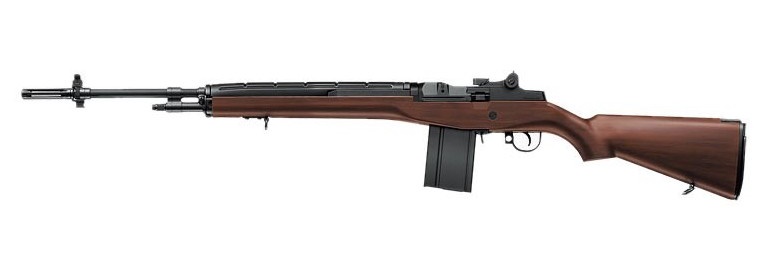
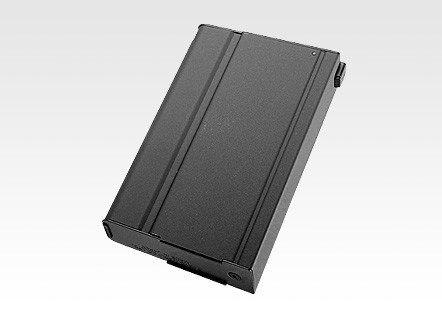
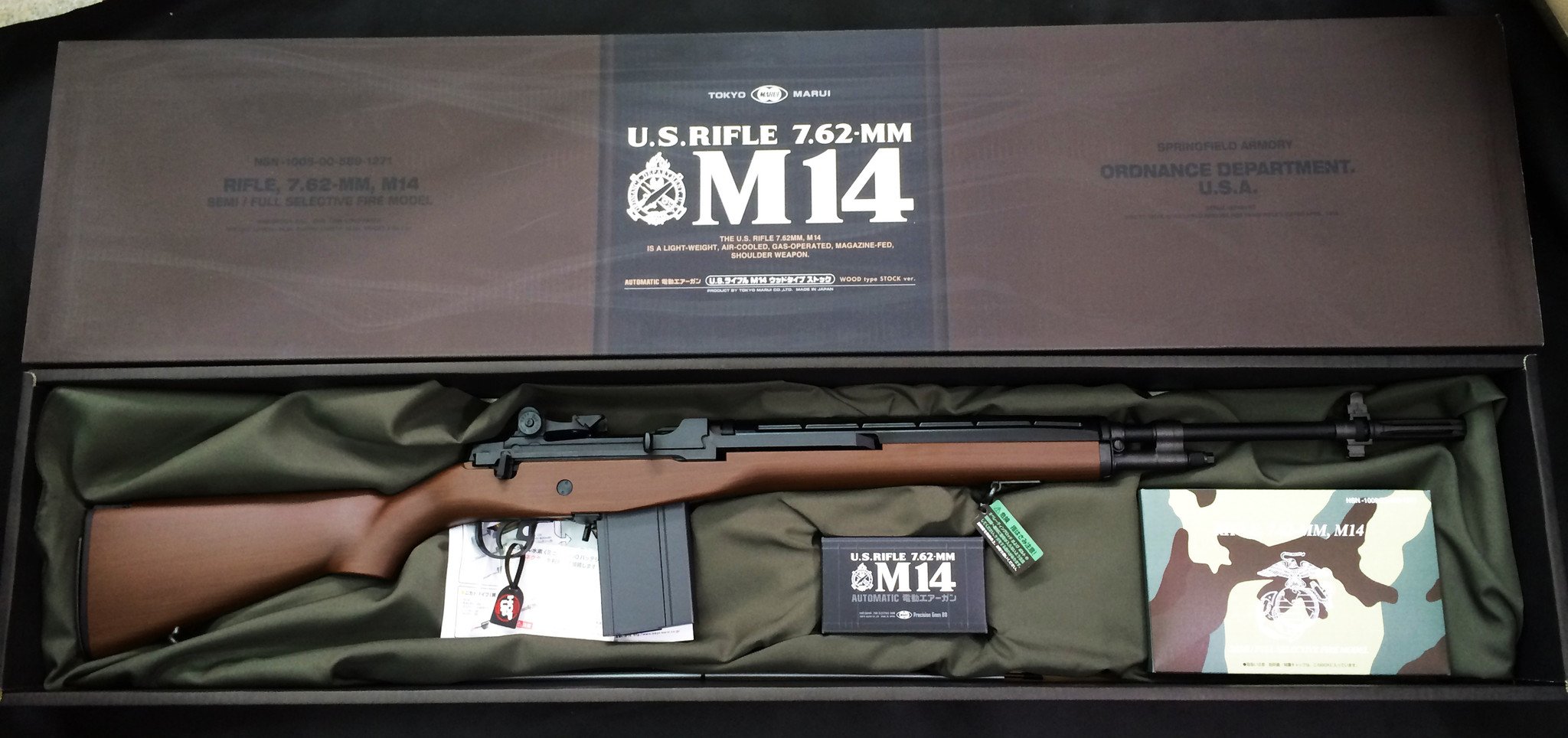
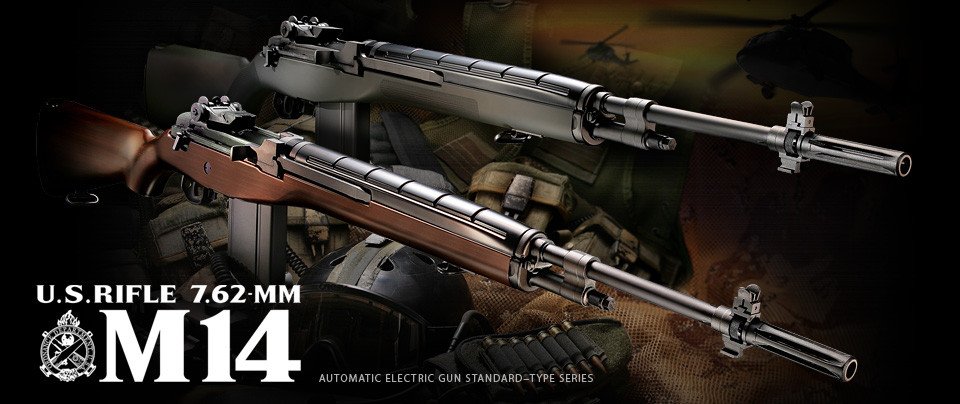
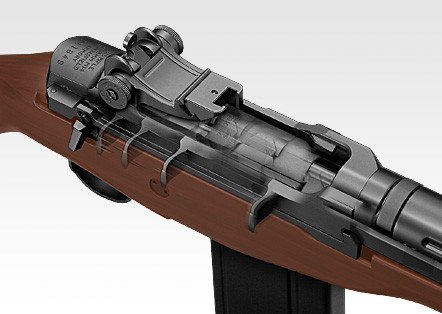
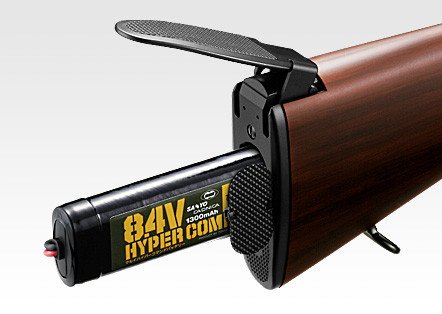
Reviews
There are no reviews yet.